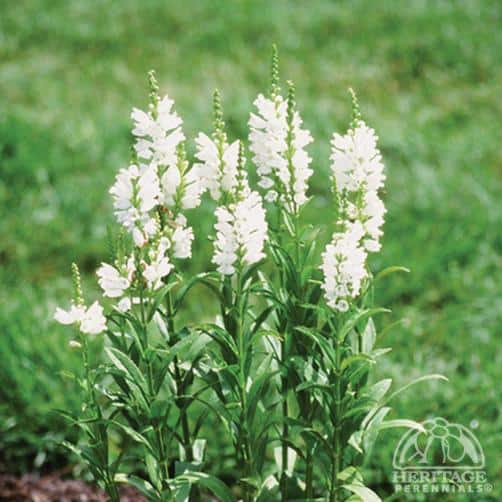
Last summer’s abundant rain encouraged colonizing perennials like bee balm (Monarda didyma, Zone 5) to make great strides in overtaking the landscape. My clumps have sent out running roots a full 18 inches (45 cm) from the central mother clump, and young shoots have risen from these roots, indicating where offset plants will begin to grow next season. This is a bold grasp for territory, and will continue in early spring long before I get out to do something about it. Soon I’ll have a monarda meadow!
Bee balm isn’t the only culprit. The summer rains have also fueled the expansive root systems of obedience plant (Physostegia virginiana, Zone 3). I had a lot of fun with this plant when my children were young, showing them how to arrange the articulated blossom spikes in any direction. Obedience plant cultivars, such as deep lilac-pink ‘Vivid’, bright pink ‘Bouquet Rose’ and white ‘Summer Snow’, are lovely autumn-blooming plants in part shade, but they make expansive root growth in moist soil. Well-behaved white ‘Miss Manners’ is a non-spreading selection that will stay in place, making only a thicker clump. Also worth having is dwarf ‘Crystal Peak White’ (18 x 18 inches / 45 x 45 cm), which has elegant snapdragon-like blossoms, but will make thick expanding patches at the front of a moist border. I also have a clump of gooseneck loosestrife (Lysimachia clethroides, Zone 4), a garden brute if ever there was one, but I like the hung-over heads of white flowers all dangling toward the best sunlight. I placed one clump in part shade and exceptionally dry soil under a deep roof overhang, but moisture has found its way even there, and the goosenecks are marching forward. This all adds up to too much of a good thing, but I like these plants well enough to keep them and continue monitoring their expansion. Normally, I would only need to dig out expanding roots and unwanted young plants around the central mother clumps every other year. It’s quick work and the shallow roots offer little resistance. But after a summer of repeated torrential rains, there’s enough aggressive colonization to require a lot of root ripping to get things under control. Of course, with a good supply of four-inch (10-cm) pots, there will be enough young plants to open a nursery. Gardening is full of unexpected opportunities.








